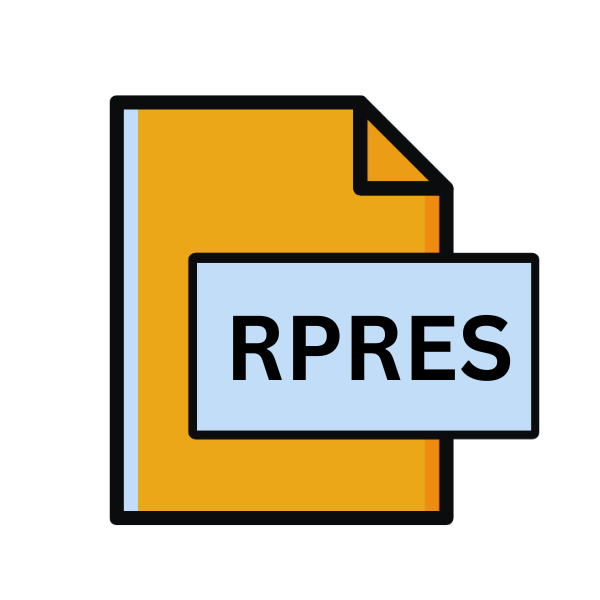.RPRES File Extension

R Presentation File
| Developer | The R Project for Statistical Computing |
| Popularity | |
| Category | Data Files |
| Format | .RPRES |
| Cross Platform | Update Soon |
What is an RPRES file?
In the realm of presentations, the .RPRES file extension holds significance as a format designed for R Presentations.
R, a powerful programming language and environment for statistical computing and graphics, introduced this file format to enable users to create dynamic, data-driven presentations seamlessly.
In this article, we delve into the origins, history, technical specifications, advantages, and disadvantages of the .RPRES file extension. We explore methods to convert and open these files across various operating systems.
More Information.
The .RPRES file extension emerged as part of RStudio, an integrated development environment (IDE) for R. RStudio aimed to provide R users with a user-friendly interface and tools to enhance their productivity.
With the growing demand for interactive and visually appealing presentations in data analysis, RStudio introduced the concept of R Presentations.
Initially, R Presentations were created using R Markdown, a variant of Markdown that supports R code chunks and their output.
The .RPRES file extension became associated with these R Markdown presentations, encapsulating the code, output, and formatting instructions required to generate dynamic presentations directly from R scripts.
Origin Of This File.
The .RPRES file extension is closely associated with the R programming language, which was developed by Ross Ihaka and Robert Gentleman at the University of Auckland, New Zealand, in the early 1990s.
R gained popularity for its extensive libraries and robust capabilities in statistical analysis and data visualization.
File Structure Technical Specification.
The .RPRES file format utilizes Markdown syntax for text formatting and includes YAML metadata at the document’s beginning to specify presentation settings. R code is embedded within the file, generating output such as plots and tables.
This structure seamlessly integrates code and output, enabling users to create dynamic presentations directly from their analysis scripts.
How to Convert the File?
Converting .RPRES files to alternative formats can broaden their accessibility and compatibility. To accomplish this task, users can employ several methods across different operating systems.
On Windows, the process typically involves utilizing RStudio, opening the .RPRES file, and using the “Knit” feature to export the presentation to formats like HTML or PDF.
Users can install Pandoc, a versatile document converter, and employ it to convert .RPRES files to desired formats.
The process remains largely similar on Linux and macOS, where RStudio or Pandoc serve as primary conversion tools.
On mobile platforms like Android, users can install Termux to access Linux utilities and perform conversions using R or Pandoc.
Due to the lack of native R support on iOS, users may resort to online Markdown editors or cloud-based R environments for conversion, or transfer the file to compatible devices for conversion using RStudio or Pandoc.
Advantages And Disadvantages.
Advantage:
- Integration with R: The .RPRES file extension seamlessly integrates R code and output, enabling users to create dynamic presentations directly from their analysis scripts.
- Reproducibility: By encapsulating code and output within a single file, .RPRES presentations facilitate reproducible research practices, allowing others to recreate analyses and results.
- Customization: Users have extensive control over the appearance and content of presentations through Markdown syntax and R code, allowing for highly customized and interactive slideshows.
Disadvantage:
- Dependency on R: .RPRES files require R and RStudio to create and render presentations, limiting their accessibility to users unfamiliar with these tools.
- Learning Curve: Mastery of R Markdown and R coding may be necessary to fully utilize the capabilities of .RPRES presentations, posing a learning curve for beginners.
- Limited Compatibility: While .RPRES presentations can be exported to various formats (e.g., HTML, PDF), compatibility issues may arise when sharing presentations with users who do not have R or RStudio installed.
How to Open RPRES?
Open In Windows
- Install RStudio, the integrated development environment for R.
- Launch RStudio and open the .RPRES file.
- View and edit the presentation as needed.
Open In Linux
- Install RStudio or any text editor compatible with Markdown and R.
- Open the .RPRES file using the chosen application.
- Access and modify the presentation content.
Open In MAC
- Download and install RStudio for macOS.
- Open RStudio and import the .RPRES file.
- Explore and make changes to the presentation.
Open In Android
- Install Termux, a Linux terminal emulator, from the Google Play Store.
- Use Termux to install R or any text editor compatible with Markdown and R.
- Access the .RPRES file through Termux and view or edit it as necessary.
Open In IOS
- Due to the lack of native R support, open the .RPRES file using a compatible text editor or Markdown viewer app.
- Review the contents of the file on your iOS device.
Open in Others
- Utilize online Markdown editors or cloud-based R environments accessible from any device with internet connectivity.
- Transfer the .RPRES file to a device running a compatible operating system for viewing and editing, using tools like RStudio or Pandoc.













